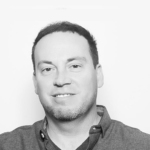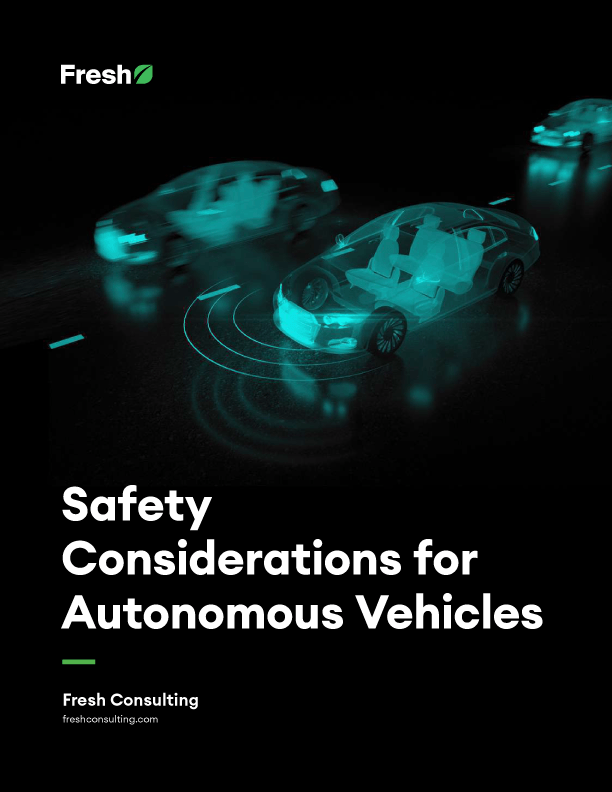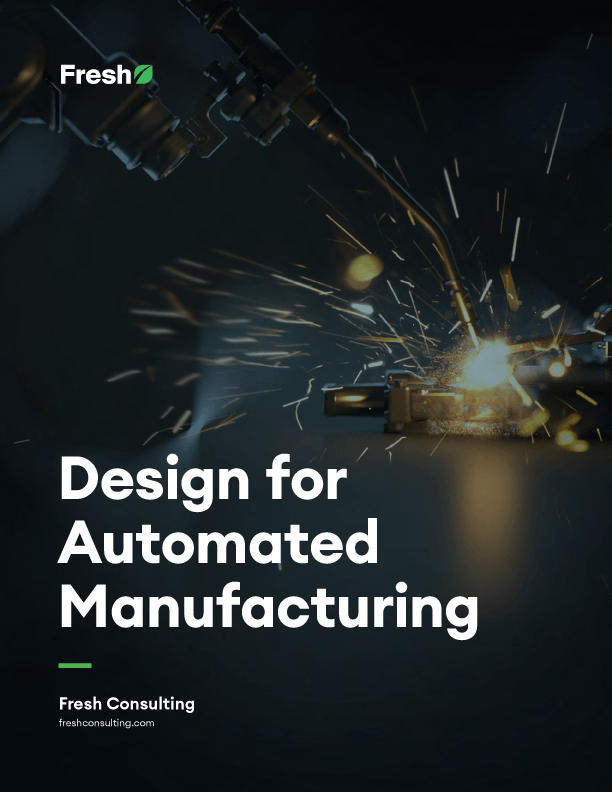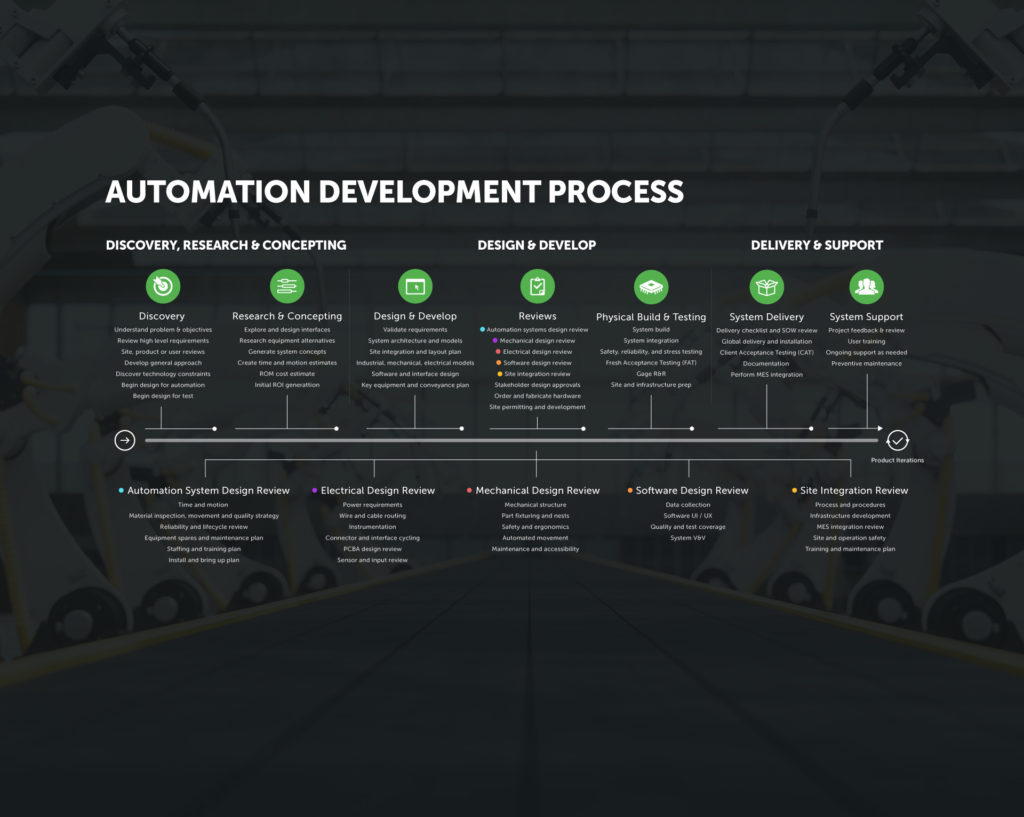Article
10 Phases of the Product Development Process
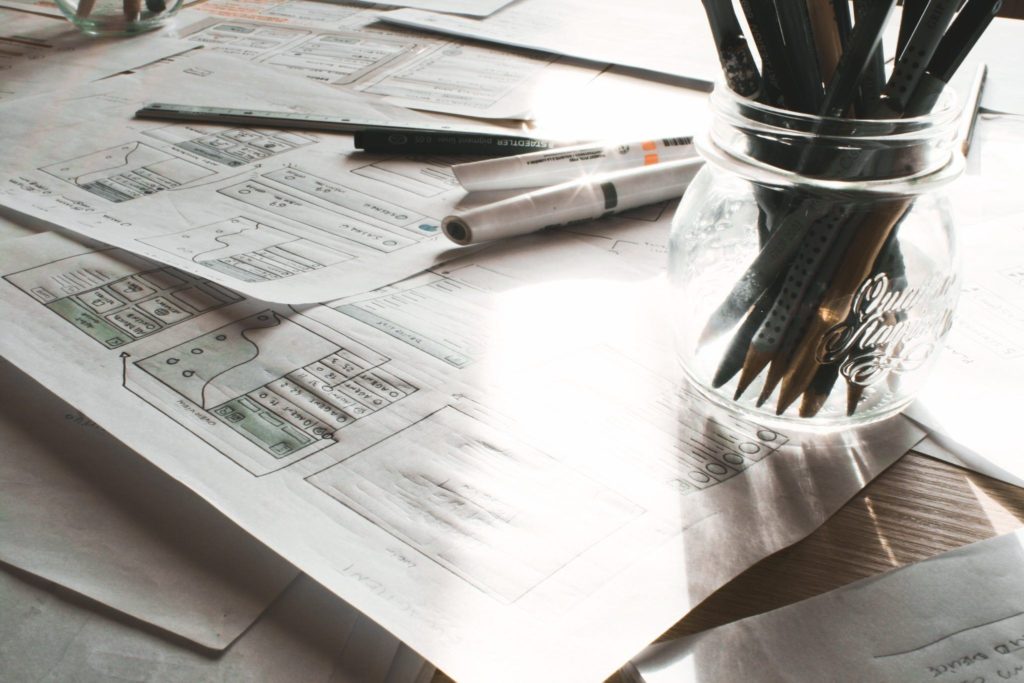
The product development process is often unknown to the end-consumer.
When walking into a store or shopping online, we might take for granted how all of the products came to fill the shelves. Since we simply see a finished product in front of us, we don’t often stop to think about how it got there.
Successful products don’t fall out of the sky as finished, marketable, and desirable results. They are the outcome of a process that takes time and effort – a lot of it! It’s almost like watching a skilled dancer; they move so gracefully that we forget how many painful hours of practice, how many failures and obstacles, and how much dedication it took to get to that performance. All of these struggles were a paƒrt of getting to the present state, but the result – what is presented to the audience – is polished and professional.
In this article, we will look at what steps happen behind the scenes to create a product with a clear value proposition and proper execution. While different teams follow different processes for product development, the steps below provide an idea of what it takes to bring a product to market successfully.
The Product Development Process: A Bird’s Eye View
Harvard Business Review points out that the product development process can be roughly broken into two stages: truth-seeking (i.e., narrowing in on the right product idea) and success seeking (i.e., making that product profitable). Before beginning, it can be helpful to consider the cost-benefit analysis of truth-seeking and development stages. In an industry, with your products, how much of a cost is there to developing and prototyping new products?
In the pharmaceutical industry, the cost of researching and developing a particular compound as a medication is very high. There are a lot of steps between taking a candidate compound and bringing a drug to market — some involve regulatory constraints, others involve doing critical thinking about whether the drug will be effective based on similar compounds, and so on. Those carrying out the research are highly skilled and compensated accordingly, and they work at expensive facilities with expensive equipment. Every working hour of research is costly, so following a bad lead that results in no drug that can be brought to market is value lost.
By contrast, with some software products, making, researching, and testing new products can be cheap. For example, with frequent feedback from users, ideas for new features or additional products can be crowd-sourced. With an iterative build process, taking the current service as it stands, and adding additional functionality can be fast. True, the man-hours are not cheap, but if a product is used on a large scale, the relative cost is more modest. For example, a team of three developers could build a feature that’s used by a thousand users, and just as quickly, the same feature could be used by a million users.
There is nuance to the new product research and development process of any particular industry, these two examples illustrate how cost and focus can vary. If the truth-seeking phase is more costly than the success-seeking phase, then optimize the process to go from idea to actionable that reduces following dead-end paths.
If researching, sourcing, and vetting ideas is less costly, then the process should consist of gathering many ideas and passing a larger volume onto the next stages of development. Similarly, if prototyping and optimizing products are costly, arrange the process accordingly. Generally, the idea here is to see your process as a pipeline where resources are invested on the way. Understand which stages draw more or less heavily on resources and balance the equation accordingly.
Our Product Development Process
We take a holistic, collaborative approach to product development. Our process is guided by insights:
1. Engineers and Designers Working Closely Together At All Stages
Typically, great ideas are not brought to market by one individual. Teams have to work together to cover all the aspects of the process. A brilliant market researcher can find a problem in need of a solution that people are willing to pay for, but if nobody is there to make the idea real, it can’t be done. A great engineer can build useful, usable, and efficient products, but if nobody needs them, that effort is wasted. Of course, one person could both research and build, but we find it more effective to let researchers and engineers each focus on what they do best while sharing their insights with each other at all stages.
2. Planning Is Critical
We spend a lot of time to ultimately save money in the production phases and over the long term. We want to spend time understanding what the product vision is, as well as versing ourselves in the business problems we’re solving, the significant opportunities, and the market landscape.
Sometimes, spontaneous and reactionary decision-making is the best way to go. Bringing a new product to market is not one of those times. This would be like sailing across the Atlantic without bringing a map, checking the weather and tides, and leaving the compass behind. Developing a new product should be thought of as a journey to the desired end goal. That journey inherently has risks, but by planning and understanding as much as possible about the landscape, those risks can be managed.
3. The Design Stage: Visual Communication Is Key to Getting Everyone On Board
Product development is a team project, and where there are teams, there must be excellent communication. This is as true for the design stage as any other. Throughout the cycle, design decisions must be communicated, and stakeholders should reach a consensus. These design decisions ultimately have a significant impact on how the product is received.
4. Creating an MVP to Save Resources
One crucial step between ideation and delivery is to create an initial prototype of the final product. While lots of time could be spent building towards the ultimate result, this runs the risk of ending up with a product that’s not been sufficiently tested and might not work. To avoid this, once the ideation phase is done, build the minimum viable product (MVP). By doing so, hold yourself accountable earlier in the process by saying, “what if we had to put this on the shelf right now?” This forces the team to create those features that will deliver the fundamental value proposition early on, before getting caught up in unrelated or non-essential work. This way, each working product can be iterated on, taking one step at a time towards the full finished product.
5. Championing a Holistic Process
A successful product is not just slick design, or brute functionality, or clever marketing. A successful product is all of those things. Throughout the process, all aspects of the product need to be seen as a part of a more significant endeavor. The product, be it a service, a consumable, or a physical good, needs to be seen as more than just the thing itself, but also how customers react and engage with it.
Take, for example, an iPhone. Beyond just a communication tool, it is a design object and a symbol of affluence and modernity. There’s more to it than metal and glass. Any product is a holistic and partly abstract thing, and so the creation process must take this into account.
6. Focusing on Innovative Thinking
Innovative ideas come from a team of focused brainstormers collaborating on new ideas. To uncover the best ideas, we have innovative thinkers at work on all parts of the product design process. People are the most valuable asset in the cycle.
7. Focusing on Partnership Throughout the Process
People on their own can be highly effective, but it often takes collaboration between different or complementary teams to bring out the best in each other. Partnerships of this sort can supercharge the new product development process by reframing it as a negotiation process between two or more sets of stakeholders.
Essential Things to Remember While Developing a Product:
- While moving through the following ten steps, it might require going back a step, or even a few. Don’t think of this as a mistake or a delay, but as an important part of the process. It will not always be a linear march from 1 to 10, and lots of valuable information can be gleaned from a later step that should be integrated into an earlier step.
- Communication between stakeholders is not one of the steps specifically, but the framework that all these steps operate in. Make sure that everyone involved knows about the progress of product development.
Product Development Phases
Phase 1: Ideate (With Hopes to Innovate)
When it comes to finding an idea for a new product, the best way is to find a problem in need of a solution, then work towards a solution (the new product). This is more effective than the opposite, i.e., coming up with the product (solution) first. The difference is that problems come with a built-in potential customer base: people who experience the problem.
The other approach must begin by convincing people they have a problem, and that this is the solution needed. There is an added risk to this. What if others aren’t convinced of the problem? So, start with one issue that people face or a broader problem domain and begin to brainstorm:
- Imagine facing the problem yourself. What do you feel? When, exactly, are the pain or frustration points? How would you complain to others about it? Then consider lots of people facing the problem. What frustrations will they share? Are the pain points always the same, or do they vary in some way?
- Take some time to find out if others see the problem the way you do. Do others see it as a problem? What pain points do they have? Gather as much data as possible.
- Imagine that the problem suddenly disappeared, that it had been completely solved. Is there another issue that might come up in reaction to this? This can uncover some more significant systemic ramifications of the problem that might also need attention.
- With a grasp of the nature of the problem, begin to come up with as many solutions as possible, not stopping to critique or exclude anything at this stage. Quantity is the goal.
- In time review the brainstorm ideas and map out clusters of ideas, points that address a similar sub-problem, or a similar theme. These groups of ideas might help produce a solution.
Phase 2: Research
Having spent time with the problem and the solution in the isolation of the brainstorming setting, it’s time to find out what relevant ideas already exist.
- Research the problem, read about how it originated, and what approaches have been started to solve it.
- Using idea clusters from the previous step as search keywords, see if similar problems in a different domain might exist. How were those problems overcome?
- Gauge how many people might be facing the issue. Are there particular demographics captured?
- Talk to some people in that demographic — but also others — and see what they have to say about the problem at hand. New perspectives might come from this.
- Look into the market to see if this problem (or similar problems) has already been solved.
Phase 3: Planning
After discovering a general idea for a solution, the next phase is about turning that solution into a product. This is a negotiation between the expectations of users, businesses, and stakeholders.
- What is the budget for bringing this new product to market? Also, consider marketing costs and any resources needed for continually providing the product over time.
- What is the timeline for bringing this new product to market? Consider a window of time— is there a hard deadline, after which the product might lose value (e.g., if tied to an event)?
- Set dates for important milestone presentations. For example: present the design vision, the user stories, the MVP, and new features as they are added. This goes back to communication between stakeholders.
Phase 4: Design
In the context of developing a new product, design is a broad term. It includes the traditional, aesthetically-oriented work of producing the visual experience, but also the work of fine-tuning user experiences and engineering the ethos of the product and how it fits into the market.
- All of the different aspects of design share the common goal of creating the vision for the product — how it looks, how it feels to interact with, how people perceive it compared to competitors. Nonetheless, these are all different tasks, to compartmentalize either by putting different people on these areas or separating the tasks.
- As mentioned before, be sure to communicate between the different designers and stakeholders to ensure that the vision for the product is coming together coherently and is client-approved.
Phase 5: Prototyping
As mentioned before, a finished product does not fall out of the sky, ready to be put in the hands of consumers. It’s the result of a longer development process that begins to take shape physically in the prototyping phase. Up until now, lots of aesthetic decisions have been made, and a market niche has been targeted, but it’s time to begin following the blueprint and building the first iteration.
- Remember that the point here is to build the main features of the product, not to have the full polished result.
- In combination with step 6 (testing), see what works and what needs improvement, and then iterate. Move from the fundamental functionality to the smaller details.
- Solicit feedback from various stakeholders. Once the product begins to take shape, it might be different from how people imagined it in earlier stages. Check in to make sure everyone is looped into the development.
Phase 6: Testing
Testing is as much a part of the building phase as it is quality assurance. Thorough tests allow those prototyping to confidently move from one version to another, knowing that so far, all features are working.
- Tests must be done before any product is brought to market to avoid problems after launch. They are a part of an iterative build process. They remain important at all stages of product development, to ensure that what we consider to be the finished product will work in all the ways promised.
Phase 7: Sourcing and Costing
Products are made of other things. Cell phones are made of glass, metal, and silicone. Online marketplaces are made of code and distributed servers. While at this point, we have already built a fully functional version of our product by iterative testing and prototyping, there’s a critical difference between that build process and going to market. The product has to be able to scale.
- Think at a high level about what materials and labor will have to be sourced over the lifecycle of the product. Don’t neglect replacement parts and bug fixes after launch.
- Plan for contingencies: What if demand is much bigger than expected? Will the sources be sufficient? What alternatives can be found?
- Consider environmental impact when looking for cost-effective and responsible solutions.
- Of course, the cost of your product and the value of raw materials are related, so be sure to balance this equation to get a quality product that your audience can afford.
Phase 8: Production
While releasing the product often seems like the point of most commitment, it is often the production stage, that is the most consequential. When it comes to physical products, don’t go to production until all the previous steps have been completed. Once produced at scale, you can’t prototype, test, and change it. But having followed the best practices thus far, we are ready for this stage.
- Ensure the product is production-ready.
- Be an active observer of this process to correct any errors that may arise.
- Keep an eye out for any inefficiencies that could be reduced in subsequent iterations of the product.
Phase 9: Release the Product
Now it’s time to put the product out in the world and into the hands of customers. Marketing campaigns and means of distribution vary a lot by industry and product, but some principles apply broadly. Bearing in mind is as an insider, a lot of time has been spent with the product since its earliest stages, but for the general public, it’s brand new. Use that novelty factor to make a splash. Empathy will help connect with customers and understand how to best introduce the product in a way that will make the most impact for your users.
Phase 10: Support the Product
The challenge of going from an idea to completed product is done, the tough job of ensuring customer success now begins. As a rule of thumb, assume that a customer might not have even the slightest idea of how to use your product. This exercise is a helpful part of the testing phase, and through it, the correct support resources can be put in place.
Digital vs. Physical Product Development
Digital products and physical products are the two most easily identifiable categories of products. Generally, digital product development follows the same steps, but things like sourcing and production will look different. Instead of sourcing raw materials, the problem is more about building an excellent infrastructure to operate the technology.
Scaling a digital product up for production is also different. Making a web service available to a million users is more easily reversed than printing a million books. A new build of the service can easily be pushed to production to fix a typo or other problem. But a book published with a typo can only be corrected in the next printing. There are still important considerations when scaling a digital service. For example, technology built and tested for one million users will not necessarily run as smoothly for ten or fifty million users.
Our Unique Process
We offer high-end engineering and design with industry leaders involved in your project. Our leadership team has decades of experience, ready to take on any challenge. The team spans all aspects of the holistic design process, including experts in industrial design, engineering, web development, design, and product ownership.
A team of experts can be assembled to build any product, digital or physical. We also work to understand the client’s grand vision, working closely with goals and constraints to co-create what fits. The value of an ongoing partnership is a shared investment in a product’s success.
Recommendations
This is the roadmap most products will follow from idea to market release. Each step discussed is an integral part of a more extensive process that might need to circle back a few times between various stages to achieve a truly successful product. This is to be expected because feedback from any stage is critical to take into consideration as you move forward.
It can test your patience, but careful consideration of the feedback will ensure that the product is well thought out and robust. By starting with this process as a framework, you are on the way to developing an amazing product.
